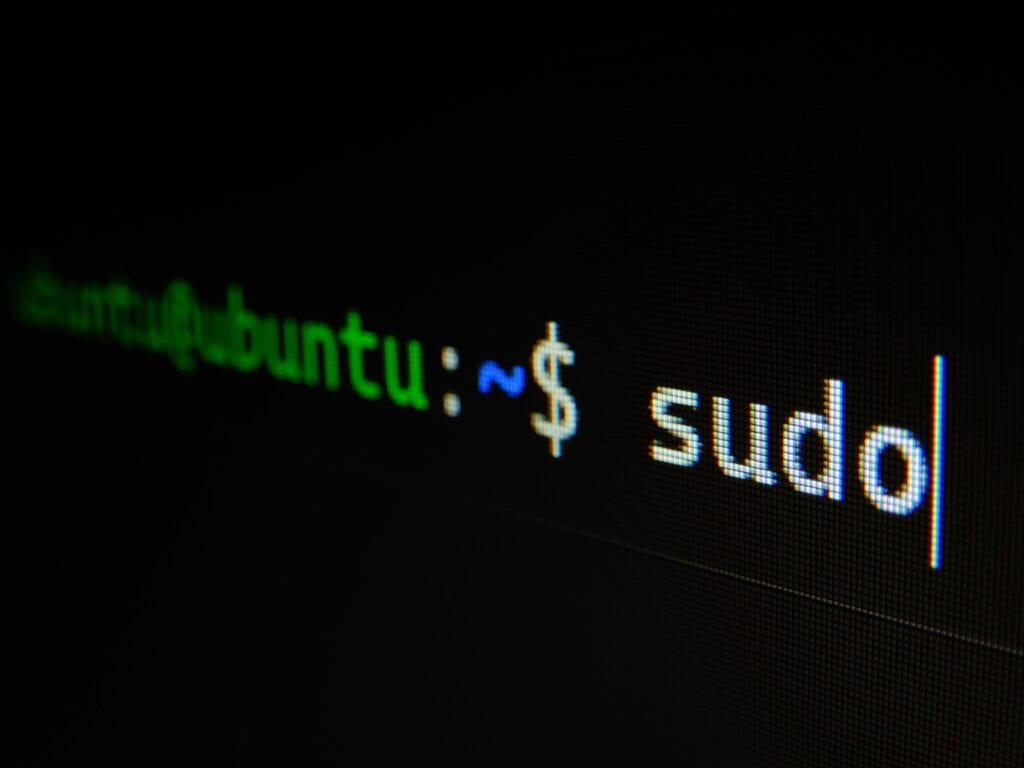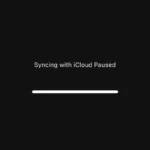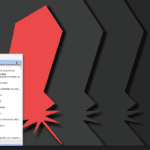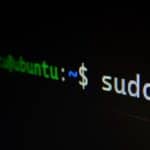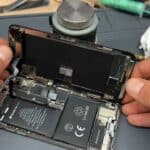Mounting a hard drive in Linux is an essential skill for accessing and managing your data. This guide will help you easily mount and unmount drives, troubleshoot common problems, and even mount ISO images. Knowing about the different filesystems in Linux can improve your work with various storage devices and boost your system’s performance.
Adding a new hard drive to your Linux computer gives you more space for your files. However, you need to mount it first to use it. Mounting a hard drive connects it to your system so you can access the files. Linux provides tools to help you mount drives. You can either use commands in the terminal or click buttons in a graphical program. Both methods work well, so choose the one you prefer.
Many Linux distributions automatically mount drives when you plug them in. But sometimes, you may need to do it manually. Learning how to mount drives will help you work with different types of storage in Linux.
Mounting a Hard Drive in Linux: A Step-by-Step Guide
Need to access files on a hard drive in your Linux system? You’ll need to mount it first. Mounting makes the drive’s contents accessible to your operating system. This guide provides a clear breakdown of how to mount a hard drive in Linux, whether it’s an internal SATA drive, an external USB drive, or even an ISO image.
Before You Begin
- Identify the Drive: Use the
lsblkcommand in the terminal to list all connected storage devices. Note the name of your hard drive (e.g.,/dev/sda,/dev/sdb). - Create a Mount Point: This is a directory where the hard drive’s contents will be accessible. Use the
mkdircommand to create a new directory (e.g.,sudo mkdir /mnt/mydrive).
Mounting the Drive
- Using the
mountCommand:
- Basic Mounting: Use the following command, replacing
/dev/sdb1with your drive’s name and/mnt/mydrivewith your mount point:sudo mount /dev/sdb1 /mnt/mydrive - Specifying Filesystem Type: If the drive uses a different filesystem (e.g., NTFS), you may need to specify it:
sudo mount -t ntfs-3g /dev/sdb1 /mnt/mydrive
- Mounting with the
/etc/fstabFile:
- Edit the fstab file: Open the file with root privileges (e.g.,
sudo nano /etc/fstab). - Add a new line: Add a line with the following format, replacing the placeholders with your drive’s information:
/dev/sdb1 /mnt/mydrive ext4 defaults 0 2 - Save the file: This will automatically mount the drive every time your system boots.
Unmounting the Drive
When you’re finished using the drive, unmount it safely using the umount command:
sudo umount /mnt/mydriveTroubleshooting
- Permissions Issues: If you encounter permission errors, ensure the mount point has the correct ownership and permissions.
- Incorrect Filesystem: If the drive doesn’t mount, double-check that you’ve specified the correct filesystem type with the
-toption. - Drive Not Recognized: If
lsblkdoesn’t show your drive, make sure it’s properly connected and powered on.
Mounting ISO Images
To mount an ISO image, use the mount command with the -o loop option:
sudo mount -o loop /path/to/image.iso /mnt/mydriveUnderstanding Linux Filesystems: A Brief Overview
Linux supports a variety of filesystems, each with its own characteristics and advantages. Some common filesystems include:
- ext4: A widely used, journaling filesystem known for its stability and performance.
- XFS: A high-performance filesystem often used for large storage servers.
- Btrfs: A modern filesystem with advanced features like snapshots and data integrity checks.
- NTFS: A filesystem commonly used in Windows systems. Linux can usually read and write to NTFS partitions with the help of the
ntfs-3gdriver.
Understanding the different filesystems can help you choose the right one for your needs and ensure compatibility with your operating system.
Understanding Linux File Systems
Linux file systems organize and store data on storage devices. They come in different types and use a specific structure to manage files and folders.
Overview of File System Types
Linux supports many file system types. The most common is ext4. It offers good performance and reliability. Other options include:
- XFS: Good for large files
- Btrfs: Focuses on data integrity
- FAT32: Compatible with many devices
- NTFS: Used by Windows systems
Each type has its own features. Ext4 is often the default choice for Linux. It handles large files well and recovers quickly after crashes.
File System Hierarchy and Mount Points
Linux uses a tree-like structure for its file system. The root directory (/) is at the top. All other directories branch out from it. Key folders include:
- /home: User files
- /etc: System settings
- /var: Variable data like logs
Mount points are empty directories where file systems attach. When you mount a drive, its contents appear in that directory. For example, a USB drive might mount at /media/usb.
The mount command links file systems to mount points. This makes the files accessible through the Linux directory tree. Users can then work with files as if they were on the main system drive.
Preparing for Mounting
Before mounting a hard drive on Linux, you need to identify the drive and create a mount point. These steps are key for a smooth mounting process.
Identifying the Hard Drive
To mount a hard drive, you first need to know its device name. Linux assigns names like /dev/sda or /dev/sdb to hard drives. The lsblk command shows all block devices, including hard drives and partitions.
Open a terminal and type:
lsblk
This displays a list of drives and partitions. Look for the size that matches your hard drive.
For more details, use:
sudo fdisk -l
This shows partition information and filesystem types.
To get the drive’s UUID, use:
sudo blkid
Write down the device name (/dev/sdX) or UUID. You’ll need it for mounting.
Creating a Mount Directory
After identifying the drive, create a directory to serve as the mount point. This is where the drive’s contents will appear in the file system.
Choose a location for the mount point. Common choices are /mnt or /media.
To create a new directory, use the mkdir command:
sudo mkdir /mnt/mydrive
Replace “mydrive” with a name that describes your drive.
Make sure you have write permissions for the new directory:
sudo chmod 755 /mnt/mydrive
This allows you to access the mounted drive.
With the drive identified and mount point created, you’re ready to mount the drive.
Mounting Drives in Linux
Linux lets you access data on hard drives by mounting them. This process connects the drive to a folder in your file system. You can mount drives manually or set them to mount automatically when your computer starts.
Mounting with the Mount Command
The mount command is a quick way to connect drives in Linux. First, you need to create a mount point. This is just an empty folder where the drive’s contents will appear.
To create a mount point, open a terminal and type:
sudo mkdir /mnt/mydrive
Next, find your drive’s device name. Use this command:
lsblk
Look for your drive in the list. It might be named like sdb1 or sdc1.
Now you can mount the drive. Use this command:
sudo mount /dev/sdb1 /mnt/mydrive
Replace sdb1 with your drive’s name. Your drive is now ready to use.
Automatic Mounting via fstab
To mount drives automatically when your computer starts, you need to edit the fstab file. This file tells Linux which drives to mount and where.
Open the fstab file with a text editor:
sudo nano /etc/fstab
Add a new line for your drive. Here’s an example:
UUID=1234-5678 /mnt/mydrive ext4 defaults 0 2
Replace 1234-5678 with your drive’s UUID. To find this, use:
sudo blkid
Save the file and exit. Your drive will now mount each time you start your computer.
Be careful when editing fstab. Mistakes can stop your system from booting. Always make a backup before changes.
Managing Mounted Drives
After mounting a drive on Linux, you need to know how to manage it. This includes unmounting drives, making mounts permanent, and setting mount options.
Unmounting with the umount Command
The umount command is used to detach drives from the file system. To unmount a drive, use:
sudo umount /mnt/mydrive
Replace “/mnt/mydrive” with the mount point of your drive. If the drive is busy, the umount command will fail. To check which processes are using the drive, use:
lsof /mnt/mydrive
or
fuser -m /mnt/mydrive
Close any open files or programs using the drive before trying to unmount again.
Persisting Mounts across Reboots
To make mounts permanent, edit the /etc/fstab file. This file tells Linux which drives to mount at startup. Add a line like this:
/dev/sdb1 /mnt/mydrive ext4 defaults 0 2
This line mounts the first partition of the second drive (/dev/sdb1) to /mnt/mydrive. It uses the ext4 file system and default options.
After editing fstab, test the new entry with:
sudo mount -a
If there are no errors, the drive will mount automatically on reboot.
Accessing Mount Options
Mount options control how a drive is mounted. Common options include:
- ro: Read-only access
- rw: Read-write access
- noexec: Prevent execution of files on the drive
- auto: Mount automatically at boot
To set options, add them to the fourth field in fstab:
/dev/sdb1 /mnt/mydrive ext4 defaults,noexec,ro 0 2
This mounts the drive as read-only with no execution allowed. You can also set options when mounting manually:
sudo mount -o ro,noexec /dev/sdb1 /mnt/mydrive
These options give you control over how drives are used on your system.
Advanced Mounting Techniques
Linux offers powerful ways to mount hard drives. These methods give users more control and flexibility. They also help with unique setups and special file systems.
Mounting with UUIDs
UUIDs are unique IDs for each drive. They don’t change like device names can. To find a drive’s UUID, use this command:
sudo blkid
To mount a drive with its UUID, add a line to the /etc/fstab file:
UUID=your-uuid-here /mount/point filesystem-type options 0 0
Replace “your-uuid-here” with the actual UUID. Set the mount point and file system type. Choose options like “defaults” for normal use.
This method is more stable than using device names. It works even if you move the drive to a different port.
Managing Network File Systems
Network File Systems (NFS) let you access files on other computers. To mount an NFS share, first install the nfs-common package:
sudo apt install nfs-common
Then create a mount point and use this command:
sudo mount server:/shared/folder /local/mount/point
For Samba shares (often used with Windows), install cifs-utils:
sudo apt install cifs-utils
Mount a Samba share like this:
sudo mount -t cifs //server/share /mount/point -o username=your_username
To make network mounts permanent, add them to /etc/fstab. Use the _netdev option to prevent boot issues if the network is down.
Mounting Drive Images
Linux can mount disk images as if they were real drives. This is useful for testing or accessing data without a physical drive.
To mount an ISO image:
sudo mount -o loop /path/to/image.iso /mount/point
For other image types, you might need to set up a loop device first:
sudo losetup /dev/loop0 /path/to/image.img
sudo mount /dev/loop0 /mount/point
To unmount, use these commands:
sudo umount /mount/point
sudo losetup -d /dev/loop0
This technique lets you work with drive images easily. It’s great for checking backups or working with virtual machines.
Graphical User Interface (GUI) Methods
Linux offers easy ways to mount drives using a graphical interface. These methods are great for users who prefer not to use the command line.
Using Disks Utility
The Disks utility is a handy tool in many Linux systems. It lets users manage drives without typing commands.
To use Disks:
- Open the Disks app
- Pick the drive you want to mount
- Click the “Play” button to mount it
Disks shows info about your drives. You can see the size and type of each one. It also lets you format drives and change how they work.
Ubuntu and other Linux systems come with Disks built-in. It’s a simple way to handle storage devices.
Mount Options in File Managers
File managers in Linux can also mount drives. They make it easy to access files on external devices.
Steps to mount in a file manager:
- Open the file manager
- Look for the drive in the sidebar
- Click on the drive to mount it
Most Linux desktops show plugged-in drives right away. You can often just click on them to use them.
File managers let you work with USB drives and hard disks. They also help with disk images and other storage types.
Some file managers have extra options for mounting. You can choose to mount as read-only or set other rules.
Common Issues and Troubleshooting
Mounting hard drives in Linux can sometimes lead to problems. Users may face mount failures or drive errors. Here are ways to fix these issues.
Resolving Mount Failures
Mount failures happen when Linux can’t connect a drive to the system. This can be due to many reasons. Here are some steps to fix it:
Check if the drive is detected:
- Run
lsblkto see all drives - If not listed, the drive may be faulty
- Run
Verify the mount point exists:
- Create it with
sudo mkdir /mnt/mydrive
- Create it with
Try manual mounting:
- Use
sudo mount /dev/sdb1 /mnt/mydrive - Replace sdb1 with your drive name
- Use
Check filesystem type:
- Use
sudo blkidto see drive info - Add -t option to mount command
- Use
If these steps don’t work, check system logs for more details.
Handling Drive Errors
Drive errors can stop Linux from reading or writing data. Here’s how to deal with them:
Run a filesystem check:
- Use
sudo fsck /dev/sdb1(replace sdb1) - This can fix many common errors
- Use
Check drive health:
- Install smartmontools
- Run
sudo smartctl -a /dev/sdb
-
- Copy important files to another drive
- Do this before making big changes
Update /etc/fstab carefully:
- Wrong entries can cause boot issues
- Use UUID instead of device names
If errors persist, the drive might be failing. Consider replacing it soon.
Mounting External and Removable Drives
Linux lets you connect and use many types of external storage devices. These include USB drives, flash drives, and SD cards. You can easily mount them to access your files.
USB Drives and Flash Drives
Mounting USB drives in Linux is simple. When you plug in a USB drive, Linux often mounts it right away. If not, you can mount it manually.
To mount a USB drive:
- Plug in the USB drive
- Open a terminal
- Type “lsblk” to see the drive name (like sdb1)
- Make a mount point: “sudo mkdir /mnt/usb”
- Mount the drive: “sudo mount /dev/sdb1 /mnt/usb”
Now you can access your files in the /mnt/usb folder.
To safely remove the drive:
- Type “sudo umount /mnt/usb”
- Unplug the USB drive
SD Cards and Other Removable Media
SD cards and other removable media work like USB drives. Linux treats them the same way.
To mount an SD card:
- Insert the SD card
- Find the device name with “lsblk”
- Create a mount point: “sudo mkdir /mnt/sdcard”
- Mount it: “sudo mount /dev/mmcblk0p1 /mnt/sdcard”
Replace “mmcblk0p1” with the correct device name for your SD card.
Raspberry Pi computers often use SD cards as their main storage. They mount them automatically when booting up.
To unmount any removable media, use the “umount” command followed by the mount point.
Frequently Asked Questions
Mounting hard drives in Linux involves specific commands and steps. Here are common questions about the process.
How can one permanently mount a hard drive in Linux?
To permanently mount a drive in Linux, add an entry to the /etc/fstab file. This file controls which devices mount at boot time.
First, find the drive’s UUID using the blkid command. Then add a line to /etc/fstab with the UUID, mount point, and file system type.
What steps are required to mount a hard drive in Ubuntu?
In Ubuntu, open a terminal and use the lsblk command to list available drives. Create a mount point directory with mkdir. Then use the mount command to attach the drive to the mount point.
Which command is used to mount a hard drive in Linux?
The main command to mount drives in Linux is mount. The basic syntax is:
sudo mount /dev/sdX /mnt/mountpoint
Replace sdX with the drive’s name and mountpoint with the desired location.
How do you format and mount a hard drive in Linux?
To format a drive, use the mkfs command. For example, to create an ext4 file system:
sudo mkfs.ext4 /dev/sdX
After formatting, mount the drive as described earlier.
Where should a drive be mounted to ensure it remains permanent in Linux?
For a permanent mount, choose a mount point in the /mnt or /media directory. Add the mount details to /etc/fstab to make it persist across reboots.
What is the procedure for unmounting a drive in Linux?
To unmount a drive, use the umount command:
sudo umount /mnt/mountpoint
Replace mountpoint with the location where the drive is mounted. Ensure no programs are using the drive before unmounting.
